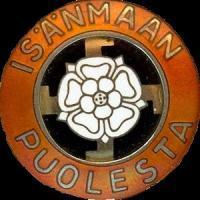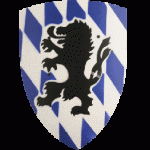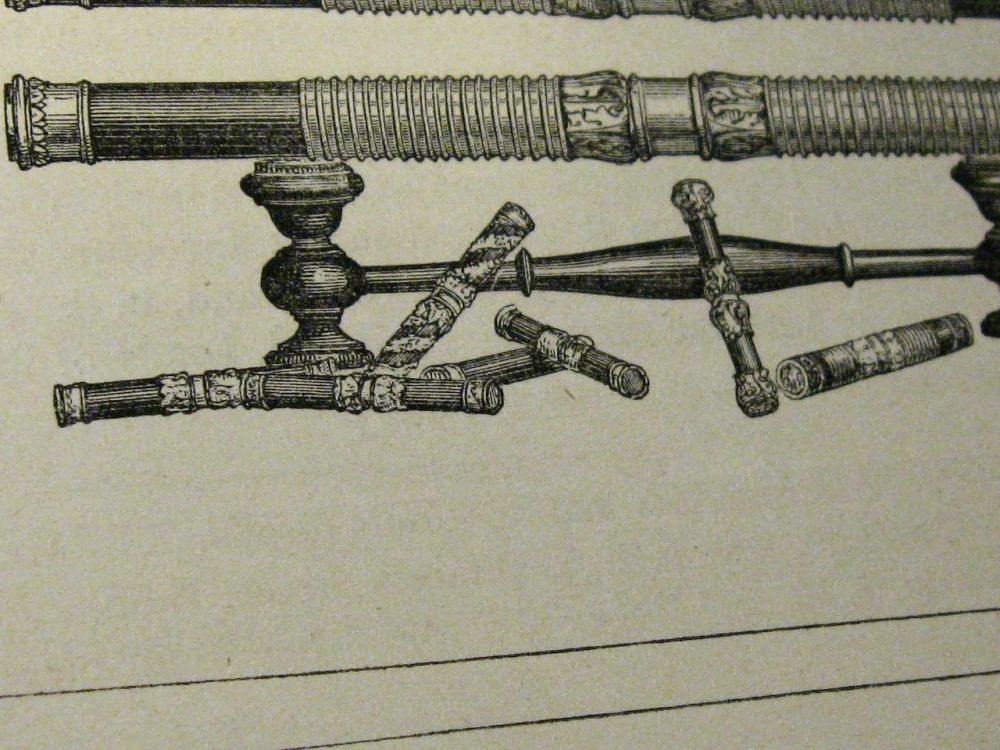-
Posts
45 -
Joined
Profile Information
-
Gender
Male
-
Location
USA
Recent Profile Visitors
2,315 profile views
CollectorInTheUSA's Achievements
-
I'm not sure why this would be confusing? The St Edward's Crown is the one used for Coronations, and has been since the 1600's. Maybe some will be confused because it has been nearly 70 years since we had a Coronation, so they are not knowledgeable about the subject, but I'm sure by the time it's all said and done, most everyone will be well-versed in the ins-and-outs of Coronation Regalia.
- 1 reply
-
1
-
Simius Rex: to be quite honest, I'm now "getting disappointed and a bit annoyed" at the tone of voice you used in your reply... I know it's easy online to slide into sounding rude, hostile, and condescending, but you should know better. So, stop typing in ALL CAPS, stop putting words into peoples' mouths, and practice kindness in your online activities on a fraternal forum.
-
Again, I don't disagree that collectors everywhere should do their homework, buy books, read, compare, that's a given. Those collectors who don't do any of that, will probably regret it at some point or another. What I am disagreeing with, is "victim shaming" which is blaming the victims, for the actions of the criminals. I see that a lot on collector forums, with people saying "it's your fault if you buy a fake". That's a load of rubbish. Criminals will always find a new way to defraud, and most regular people will never be able to learn enough to avoid the criminals every time. This thread makes that point itself, when it says that the criminals are learning, and making better fakes all the time. So that's why we have police, license-granting authorities (that give auctioneers a license to operate), antique dealer associations, and finally, and very importantly, forums and threads like this one, which seek to educate collectors about frauds. Trust me, if you buy a fake from an auctioneer and they refuse to make it right, and you threaten them that you will file a police report about it, and complain to the organization that gave the auctioneer the license to operate, and come on this forum and complain some more, and give the auctioneer a negative review on Google, then trust me, that auctioneer will do everything they can to make you happy. Its just not worth it to the auctioneer to go through Dante's Inferno for 1000 euro, or 2000 euro, or even 5000 euro.
-
I disagree, it's not the buyer's "fault for not performing the necessary due-diligence"... That's just "victim shaming" and deflecting responsibility for fraud from the perpetrator, to the victim. Would you say to the victims of Bernie Madoff's Ponzi Scheme, "get out of here, you should have studied harder, it was your responsibility to know that the investment products you were buying were not fraudulent, and it was your fault for not doing due diligence"? I think not, and every court in the land would disagree with you and any statement like that. Also, one of the auctioneers duties is also not to knowingly sell fakes. An auctioneer who knowingly sells fakes will have their license revoked, and will find themselves sitting in jail until their hair turns white and their teeth fall out. The only reason auction houses don't get sued more often is that they settle issues quietly and refund money when customers make a fuss about a faked item. When they don't refund they get sued and it makes for terrible publicity that they don't need and don't want. Finally, the auctioneers duty is also to the buyer. You can clearly see that when you read the auctioneers terms and conditions: Hermann Historica "guarantees the accuracy of the information provided in terms of the object’s origin, age, epoch, manufacturer and materials. If, within three years from the day of the sale, this information proves to be materially incorrect, the buyer may rescind the transaction step by step, provided that the object is unaltered and still in the condition at the time of purchase. " Ratisbon's says that "All items are guaranteed to be original manufacture before May 1945, unless otherwise stated. All customers both inland Germany and worldwide have 14 days to return the item or items for a full refund, if the item does not reach the expectation of the customer."
-
This is a very interesting thread, and thanks to everyone who has posted here. Question: is it safe these days to buy WWI and WWII medals and artifacts at German and European auctions? I am thinking specifically of "Hermann Historica" and "Ratisbon's". Are they reliable? Are their experts knowledgeable? Do you ever see fakes showing up at their auctions?
-
CollectorInTheUSA changed their profile photo
-
Excellent, I missed that one, thanks for pointing it out. I personally don't trust much that comes out of the mouths of auctioneers, as they are fairly clueless. Even the ones that sell military items and guns don't know more than just quote Mervyn's book. Often they offer for sale re cut tipstaffs and re painted truncheons, or even outright fakes. The Woolley and Wallis department that sold these tipstaffs was the silver department, so not at all related to our hobby. I do believe this was one man's collection that was offered for sale. Years before this sale, I was offered this collection by a dealer who said he knew the collector, but he was asking for silly money. Some of the ones in these pictures sold for £1400 to £3750 or so, with commission.
-
Hello Nightbreak, some very nice Scottish tipstaffs there. The middle painted one from Carmunnock is of a manner and color scheme I have seen in the past, both short and long. Not too many of those around. The one to the left, the "Stirling High Constable" (one marked S.H.C.), was that John's attribution of that tipstaff? ( I didn't see it in his book and I haven't before seen this attribution). Your Edinburgh High Constables tipstaff is a very nice thing. As you probably know, these are rare, and I have seen fewer than 10 specimens over the years. All the ones I've seen had fairly low numbers. I sort of hate to say this, but I would again disagree with dear Mervyn that this one dates from 1801, and would venture an educated guess that it is more likely to be a very late 19th century, to perhaps early 20th century example (I'd have to see the style of the engraved words on the side of the silver caps, to be absolutely sure, but I'm fairly certain I'm correct on this). The EHC tipstaffs from the earlier periods looked different, and some of those early ones are still around, but they are very very rare. I'm attaching below a photo that shows what the earlier ones looked like (this picture is from the mid 19th century book, "History of the High Constables of Edinburgh" by James Marwick, which I have in my library).
-
Brian, you are quite welcome. I'm glad I was able to offer some information. With respect to your first tipstaff, I can't really say where its from in Scotland, but could be Edinburgh, and could also be Glasgow. My sense is that there was someone who made these in one of the Scottish cities, and that they were bought and used provincially. I've never seen a similar one engraved for either England, Wales, Ireland, so I assume this type didn't travel far out of Scotland (that's not to say it couldn't have, and that we won't find one like this engraved for outside of Scotland in the future). This is much in the same way that a "ball" or "acorn" ** tipstaff is agreed to be a "Bristol" type, and yet you also find ball tipstaffs in Wales, across the Bristol Channel, and acorn tipstaffs quite far away from Bristol. For example I once saw an acorn top tipstaff engraved Weston-super-Mare, which is 25 miles away from Bristol (that was a quite a distance back in the day). So my sense is that if you needed to buy a tipstaff for yourself back then, you just went to the "big city" and bought one (if your local jack-of-all-trades couldn't make you one). I might as well also add that I think your first tipstaff is also likely Victorian, rather than Georgian. I say this without any concrete proof, but it's just that I've seen others in that sort of tapering-down-form, which seemed so very much more ancient, and so this is just a "feeling" of mine, and should be taken as just that. Maybe we'll know more as time goes by. ** Mervyn once said that a Bristol "acorn" topped tipstaff was for a "harbour master" but I have never seen evidence supporting that claim, and Mervyn never did explain where he gleaned that. Weston S.M. does have a harbour though! For your second tipstaff, there are more than a handful of similar ones, engraved similarly, and with a variety of numbers (although not with a variety of letters). As I mentioned in another post, these are sufficiently known to collectors (and other very knowledgable types), for me to be able to state that they are from Edinburgh. Let me ask you one question though: in looking again at the photo you sent earlier, it looks to me like what you referred to as a "C.W." in the top of the engraving, can also be a "C. 10." So, can you have another look and let me know if you think it could be a "10"? That would make much more sense and fit perfectly with other known examples. If you agree it is, or could be, a "10", then your engraving should be read as, "Commissioner 10" over " 14th Ward".








